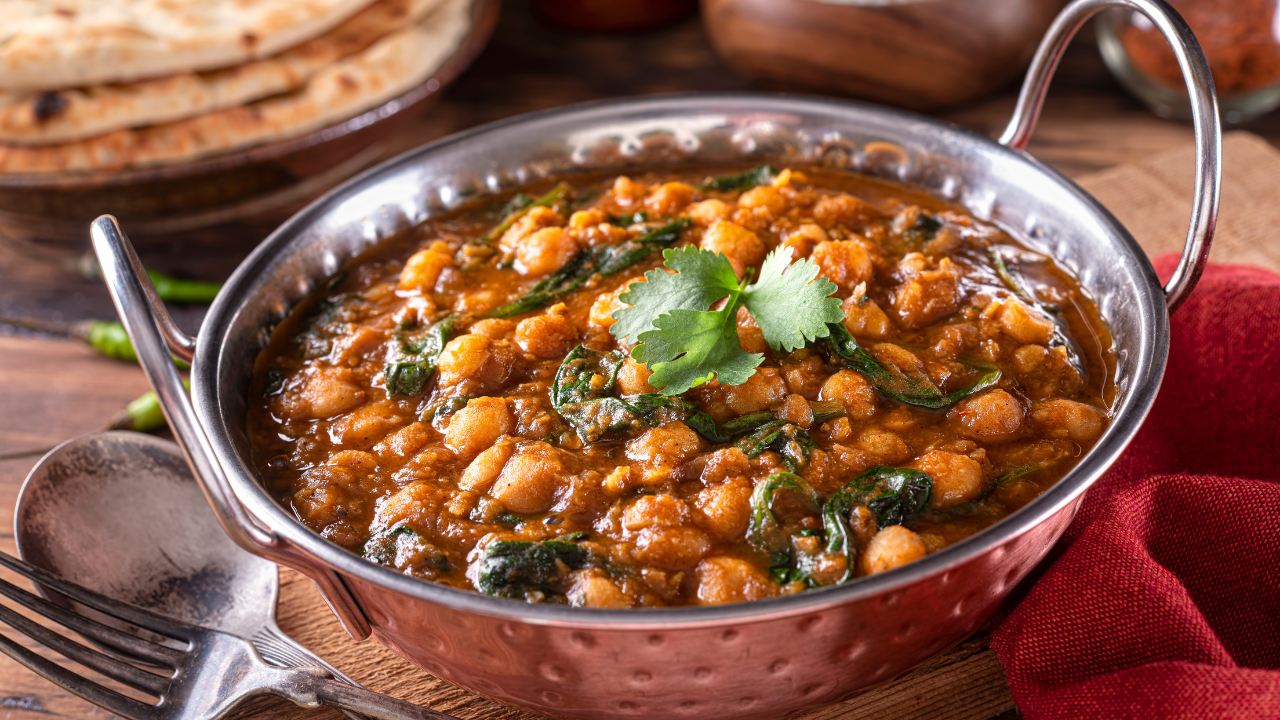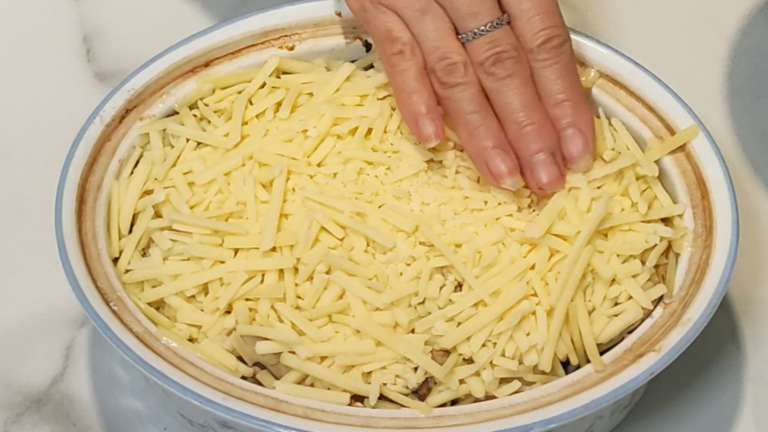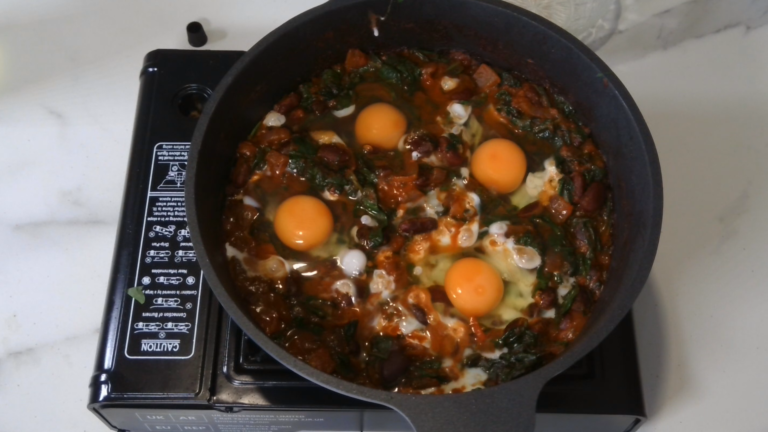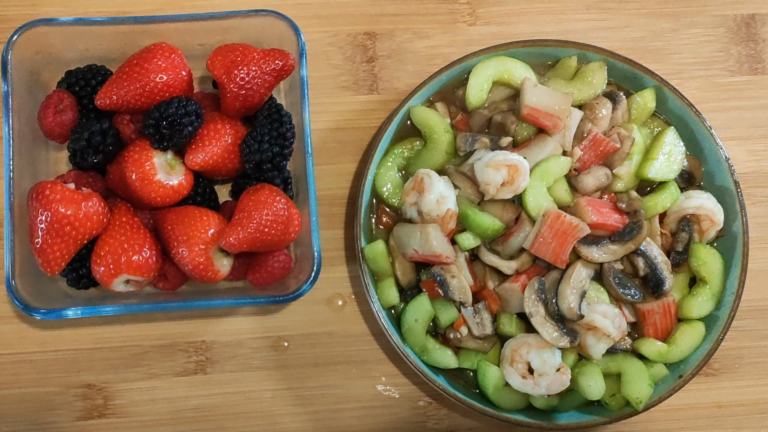Try This Easy Vegetable Curry Recipe for Beginners!
Curry has long been a beloved dish in many cultures around the world. Its rich and complex flavors, coupled with its versatility, make it a favorite among food enthusiasts.
Try This Easy Vegetable Curry Recipe for Beginners!
Course: vegetablesDifficulty: Easy3
servings30
minutes10
minutes335
kcalEasy Vegetable Curry
Ingredients
4 medium potatoes
1 large carrot
½ cauliflower
3 tbsp cooking oil (of choice)
1 large onion
1 tbsp curry powder (heat preference)
1 tin chopped tomatoes
1 tsp turmeric
¼ tsp coriander
300ml / 10fl oz vegetable or chicken stock
100g/ 3 ½ oz frozen peas
Directions
- peel and cut potatoes into even sized small chunks, slice carrot
- cut cauliflower into small halved florets
- half fill deep pan with water
- add potatoes and carrots bring to boil and cook for 8 min (until softened)
- add cauliflower cook for a further 2 min
- remove veg from pan and strain water away
- pre-heat cooking oil in a shallow pan, medium heat
- add onion cook till browning, keep stirring
- add curry powder to onion, keep stirring for 30 seconds
- add tomatoes mix well
- add veg & peas, tumeric and coriander, simmer for 5 min stirring occasionally
- serve immediately (optional) with, greek yogurt and mango chutney
Recipe Video
Notes
- As usual, don’t be afraid to experiment, Enjoy!
- Great with rice, Leave us a comment, and watch our videos, thanks
- please subscribe to our YouTube channel if you like the content.
Spice Up Your Life with Veg Curry
For beginners looking to delve into the world of curry-making, crafting a delicious vegetable curry is an excellent starting point. In this guide, we’ll explore how to create a mouthwatering vegetable curry that’s perfect for beginners.
Introduction
A. Brief overview of vegetable curry
Vegetable curry is a flavorful dish made with a variety of vegetables cooked in a fragrant sauce. It’s a popular choice for vegetarians and vegans, offering a satisfying and nutritious meal option. While traditional curry recipes may seem intimidating to beginners, with the right guidance, anyone can master the art of making delicious vegetable curry.
B. Importance of making it beginner-friendly
For beginners, it’s essential to start with a recipe that’s easy to follow and doesn’t require extensive cooking skills or specialized equipment. By breaking down the process into simple steps and providing helpful tips along the way, beginners can gain confidence in the kitchen and enjoy the rewarding experience of creating a homemade curry from scratch.

Selecting Ingredients
A. Choosing fresh vegetables
The key to a flavorful vegetable curry lies in selecting the freshest vegetables available. Opt for a colorful array of vegetables such as carrots, bell peppers, cauliflower, and potatoes. Freshness ensures optimal flavor and texture in the finished dish.
B. Selecting the right spices
Spices are the heart and soul of any curry dish. When selecting spices for your vegetable curry, consider a blend of aromatic spices such as cumin, coriander, turmeric, and garam masala. These spices add depth and complexity to the curry’s flavor profile.
C. Ensuring the availability of essential ingredients
Before starting the cooking process, ensure that you have all the essential ingredients on hand. This includes coconut milk or yogurt for creaminess, vegetable broth or water for the base, and aromatics such as onions, garlic, and ginger for flavor.
Preparing Vegetables
A. Washing and chopping vegetables
Before chopping, thoroughly wash all vegetables to remove any dirt or debris. Use a sharp knife to chop vegetables into uniform pieces to ensure even cooking.
B. Properly handling delicate vegetables
Some vegetables, such as leafy greens or mushrooms, require gentle handling to prevent bruising or damage. Be careful when washing and chopping delicate vegetables to preserve their texture and appearance.
C. Tips for uniform cutting
To achieve uniform cooking, aim for consistent size and shape when cutting vegetables. This ensures that all pieces cook at the same rate, resulting in a perfectly cooked curry.

Creating Flavor Base
A. Sautéing onions and garlic
Start by sautéing onions and garlic in oil or ghee until they are soft and translucent. This forms the flavorful base of the curry and provides a depth of flavor to the dish.
B. Incorporating ginger and spices
Add freshly grated ginger and a blend of spices to the sautéed onions and garlic. Allow the spices to toast briefly in the oil, releasing their aromatic oils and enhancing the overall flavor of the curry.
C. Balancing flavors with salt and sweetness
To achieve a well-balanced curry, season the dish with salt to enhance the savory flavors and a touch of sweetness, such as a teaspoon of sugar or honey, to balance out the spices.

Cooking Techniques
A. Simmering vs. sautéing
Curry can be cooked using various techniques, including simmering on the stovetop or sautéing in a skillet. Each method yields slightly different results, so choose the technique that best suits your preferences and available time.
B. Using a slow cooker or instant pot
For a hands-off approach, consider using a slow cooker or instant pot to cook your vegetable curry. These kitchen appliances allow for easy set-it-and-forget-it cooking, resulting in tender and flavorful curry with minimal effort.
C. Adjusting heat for optimal cooking
Adjust the heat as needed during the cooking process to prevent burning or overcooking. If the curry starts to stick to the bottom of the pan, reduce the heat and add a splash of water or broth to loosen the mixture.
Mixing and Timing
A. Incorporating vegetables into the curry base
Once the flavor base is ready, add the chopped vegetables to the pot and stir to coat them evenly with the spices. Allow the vegetables to cook until they are tender but still slightly crisp.
B. Allowing flavors to meld together
As the curry simmers, the flavors will intensify and meld together, creating a rich and flavorful sauce. Allow the curry to simmer gently, stirring occasionally, to ensure that all the flavors have a chance to develop.
C. Knowing when the curry is ready
To determine if the curry is ready, taste a small spoonful and adjust the seasoning as needed. The vegetables should be cooked through, and the sauce should be thick and flavorful.
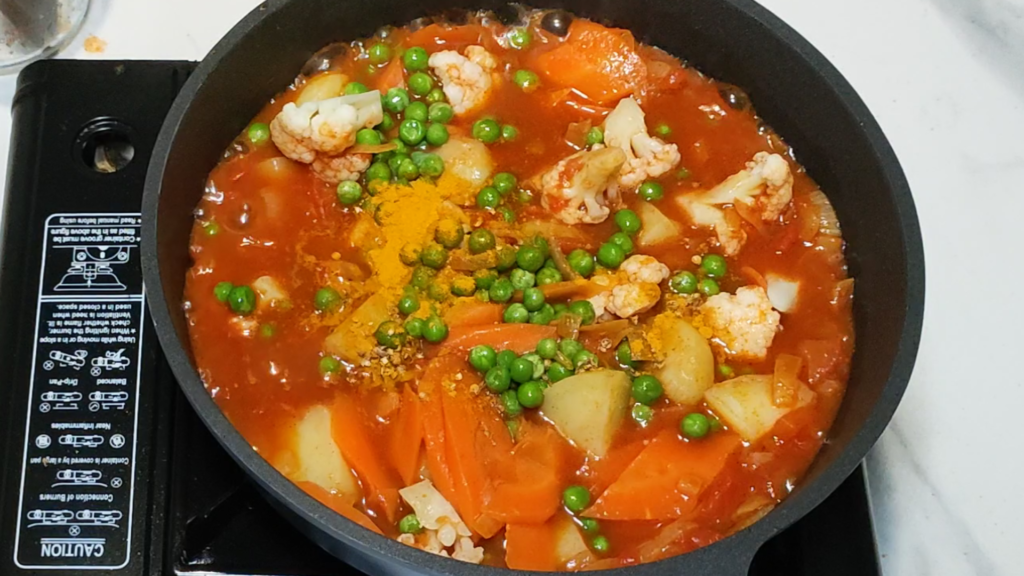
Adjusting Consistency
A. Adding liquid if too thick
If the curry is too thick, add a splash of vegetable broth, water, or coconut milk to thin it out to your desired consistency. Be careful not to add too much liquid, as this can dilute the flavors of the curry.
B. Thickening with coconut milk or yogurt
Conversely, if the curry is too thin, you can thicken it by adding a dollop of coconut milk or yogurt. This not only adds creaminess to the curry but also enhances its flavor and texture.
C. Achieving the desired texture
Experiment with different thickening agents and cooking techniques to achieve the perfect texture for your curry. Whether you prefer a thick and hearty curry or a lighter, more soupy consistency, adjust the recipe to suit your taste preferences.
Garnishing and Serving
A. Sprinkling fresh herbs
Before serving, garnish the curry with fresh herbs such as cilantro or parsley to add a pop of color and freshness. The herbs not only enhance the presentation of the dish but also contribute to its overall flavor profile.
B. Squeezing lime or lemon juice
For a burst of acidity and brightness, squeeze a wedge of lime or lemon over the finished curry just before serving. The citrus juice helps to balance out the richness of the curry and adds a refreshing zing to each bite.
C. Pairing with rice or bread
Vegetable curry pairs perfectly with steamed rice, fluffy naan bread, or crispy papadums. The starchiness of the rice or bread complements the bold flavors of the curry and helps to soak up the delicious sauce.
Presentation Tips
A. Plating for visual appeal
Take the time to plate your vegetable curry with care, arranging the vegetables and sauce in an aesthetically pleasing manner. A well-presented dish not only looks more appetizing but also enhances the dining experience.
B. Serving in traditional dishes
For an authentic touch, consider serving your vegetable curry in traditional Indian dishes such as copper bowls or ceramic thalis. These traditional vessels not only add an element of authenticity to the meal but also keep the curry warm for longer.
C. Adding final touches
Before serving, take a moment to add any final touches to your vegetable curry, such as a drizzle of coconut milk, a sprinkle of toasted nuts, or a dash of paprika for color. These small details elevate the presentation of the dish and make it feel more special.
Troubleshooting Common Issues
A. Curry too spicy
If your curry turns out too spicy, try adding a dollop of yogurt or coconut milk to mellow out the heat. You can also balance the spiciness by adding a touch of sweetness, such as a spoonful of honey or a sprinkle of sugar.
B. Curry too bland
Conversely, if your curry lacks flavor, try adjusting the seasoning with additional spices or salt. You can also boost the flavor by adding a splash of citrus juice or a spoonful of tangy tamarind paste for depth and complexity.
C. Vegetables overcooked or undercooked
To prevent vegetables from overcooking, be mindful of cooking times and adjust accordingly. If some vegetables are undercooked, you can remove them from the curry and continue cooking the remaining vegetables until they reach the desired level of doneness.
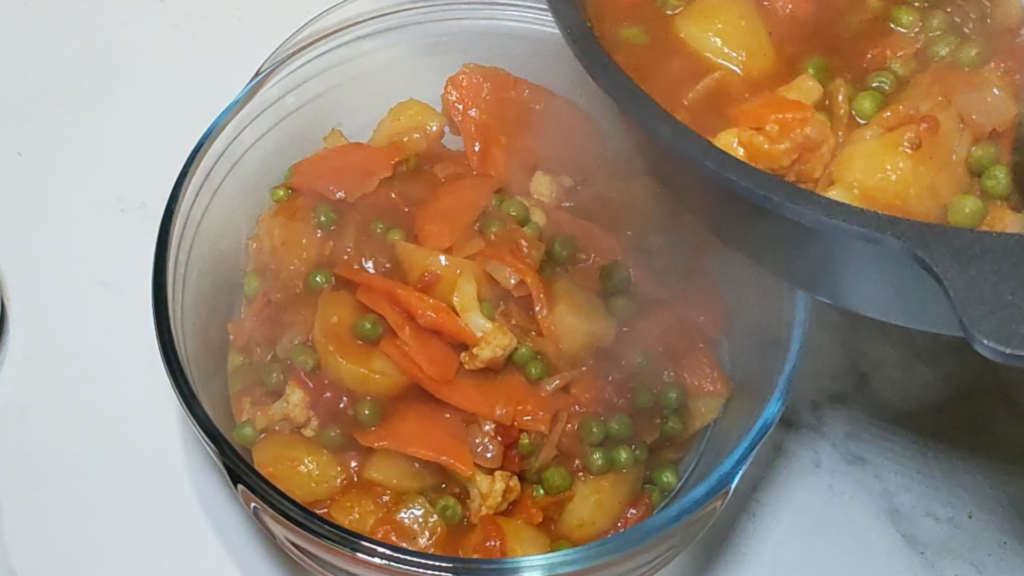
Storing and Reheating
A. Proper storage containers
Transfer any leftover curry to airtight containers or resealable bags for storage in the refrigerator or freezer. Properly stored, vegetable curry will be kept for several days in the refrigerator or up to three months in the freezer.
B. Refrigeration vs. freezing
If you plan to consume the leftover curry within a few days, refrigeration is the best option. For longer storage, freezing is ideal. Simply thaw the frozen curry in the refrigerator overnight before reheating.
C. Reheating methods
To reheat vegetable curry, simply transfer it to a saucepan and gently heat it over medium-low heat until warmed through. Alternatively, you can microwave individual portions for quick and easy reheating.
Conclusion
A. Recap of key points
In conclusion, making delicious vegetable curry for beginners is a rewarding and enjoyable experience. By following these simple steps and tips, you can create a mouthwatering curry that’s sure to impress your friends and family.
B. Encouragement for beginners
Don’t be intimidated by the thought of making curry from scratch. With a little practice and patience, you’ll soon become a pro at whipping up a flavorful and aromatic vegetable curry that’s sure to become a favorite in your household.
C. Invitation to try the recipe
So why not give it a try? Gather your ingredients, roll up your sleeves, and get ready to embark on a culinary adventure that’s as delicious as it is satisfying. And be sure to click the subscribe button for more tasty recipes and cooking tips!

